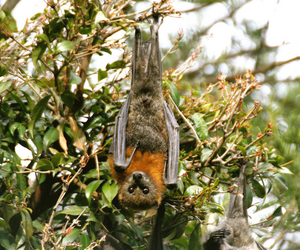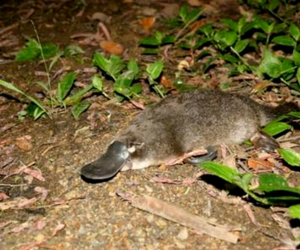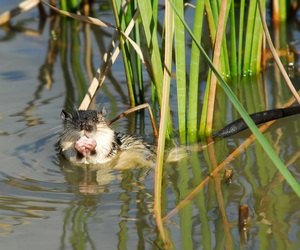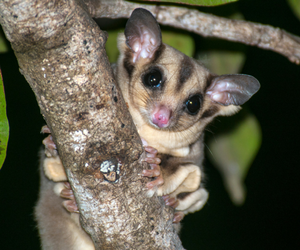On this page
Boroondara is home to many native mammals. Find out about local animals and how to protect them.
Possums
Scientific names:
- Trichosurus vulpecula (brushtail possum)
- Pseudocheirus peregrinus (ringtail possum).
Brushtail and ringtail possums are common in Boroondara.
They are attracted to trees and gardens with flowers and fruit.
Possums on your property
Don't feed possums that visit your property. This encourages more possums and can result in fighting and property damage.
If you have possums in your roof you can:
- add a nesting box to your garden to encourage them to move
- block gaps after they are no longer in your roof
- fix loose tiles in your roof
- remove or prune tree branches that overhang your roof
- try possum repellents, available at nurseries and supermarkets.
If you have possums in your garden you can protect:
- trees by installing metal or perspex sheets around the trunks
- garden beds with a floppy chicken wire fence.
Removing possums
We don't recommend trapping possums. Trapped possums can only be relocated no more than 50 m from the capture site.
Grey-headed flying fox
Scientific name: Pteropus poliocephalus.
The indigenous grey-headed flying fox has a:
- brown, furry body
- reddish-coloured collar
- grey head.

Grey-Headed Flying Fox. Image by Ian Moodie.
The grey-headed flying fox can travel up to 50 km each night in search of food and eat nectar and pollen.
You can find the grey-headed flying fox in Yarra Bend Park. Find out more about this location on our Yarra Bend Park page.
Flying foxes help pollinate plants and disperse native seeds, which regenerates our bushland.
They sometimes visit local properties at night to feed on fruit or blossoms.
You can protect your fruit and flowers in your garden by:
- covering small trees with netting that is safe for wildlife
- covering individual branches with brown paper bags.
For more information:
Platypus
Scientific name: Ornithorhynchus anatinus
The platypus is an egg-laying mammal that grows to a length of 50 cm.
It has a life span of approximately 12 years in the wild.

Platypus. Image by Cesar Consulting.
You may find platypus in:
- freshwater rivers and lakes in eastern Australia
- the Yarra River in Kew and Hawthorn.
They create riverbank burrows for shelter and protection.
They use sensors in their bill to hunt for food as they have poor eyesight. Platypus feed on:
- bottom-dwelling macroinvertebrates
- yabbies
- worms
- shrimps.
They are most active at night and can swim underwater for up to 10 minutes.
Rakali
Scientific name: Hydromys chrysogaster
The rakali is an indigenous rodent that has a white-tipped tail.
In the past they were hunted for their fur, but they are now protected in Victoria under the Wildlife Act 1975.
You can find them in:
- fresh, brackish wetlands
- Gardiners Creek in Eric Raven Reserve.

Rakali. Image by David Judge.
Rakali have:
- soft, waterproof fur
- a black to grey upper body
- white to orange underneath
- partly webbed feet.
Their body is approximately 30cm to 39cm in size. Like the platypus, they create riverbank burrows for shelter and protection.
Rakali eat:
- insects
- crustaceans
- lizards
- birds.
Krefft's glider
Scientific name: Petaurus breviceps
Krefft's gliders are a nocturnal gliding possum.
They are shy and not easily seen.

Krefft's Glider. Image copyright Jiri Lochman (Lochman Transparencies)
You can sometimes find Krefft's gliders along the Yarra River including:
- Willsmere Reserve
- Burke Road Billabong Reserve
- Green Acres Golf Club
- Yarra Flats Reserve
- Freeway Golf Course.
They nest in tree hollows and move between hollows every few days. They live in social groups of up to 12 and breed between August and October.
Krefft's gliders are omnivores and eat:
- sugary wattle gum
- eucalyptus sap
- pollen
- invertebrates.
Conservation activities in parks, reserves, and roadside areas helps to maintain their habitat. You can get involved by:
- joining local environment groups that re-vegetate sites along the Yarra. Find out more on our Local environment groups page.
- planting locally native wattles near the Yarra to provide food
- installing Krefft's glider nesting boxes.